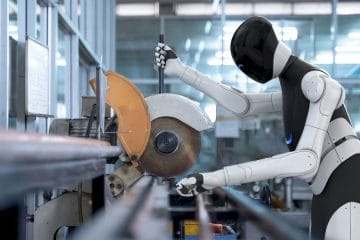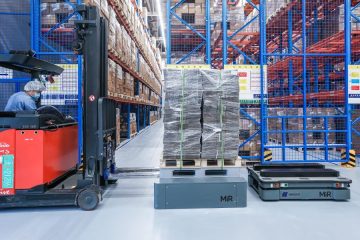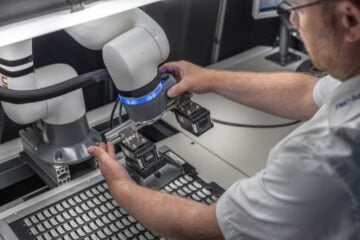
With 102,900 units (+14%) sold in 2024, more than every other professional service robot was built for the application class transportation and logistics. These robots cover mainly mobile robots for the transport and handling of goods. While traditional sales remained the main channel of monetarization, RaaS enjoyed growing popularity with a growth rate of 42% in 2024. Transportation in indoor environments without public traffic qualifies as the most important application class within this segment. A special chapter in World Robotics 2025 focuses on the drivers and challenges in this dynamic market.
Hospitality robots remain second place with more than 42,000 sold – down 11%. Robots for mobile guidance, information points in public environments and telepresence account for the majority of these robots. Such service robots are taking over small services or promoting sales in stores, shopping malls, or at front desks. As the sector is evolving, new applications have emerged, such as food and beverage preparation.
The market for professional cleaning robots, in third place, grew by 34% to more than 25,000 units sold. The main application is floor cleaning.
Sales of agricultural robots rank fourth and contracted slightly by 6% with close to 19,500 units sold. The decrease was mainly driven by cultivation and milking.
For the application group of search & rescue, security robots a total number of 3,100 units were sold in 2024, placing it in fifth position up 19%. Three out of four robots in this application class were for security services.
The medical robots
In accordance with ISO standard the World Robotics 2025 yearbook considers medical robots as a third category alongside service robots and industrial robots: sales of medical robots increased strongly by 91% to around 16,700 units in 2024. Sales of rehabilitation and non-invasive therapy robots were up 106%. Demand for surgery robots rose by 41% and sales of robots for diagnostics and medical laboratory analysis increased by 610%.
“In a special chapter of the World Robotics 2025 report, we focus on the exciting opportunities presented by the automation of medical laboratories,” says Dr. Werner Kraus, Chair of the IFR Service Robot Committee. “In times of labor scarcity, service robots help to reduce manual labor and open up new ways to deal with the rising demand for medical services from the rapidly growing elderly population.”
Robots for consumer use
Consumer service robots are produced for the mass market. Service robots for consumer use have experienced a solid growth rate of 11% with close to 20 million units sold in 2024. Robots for domestic tasks (floor cleaning, lawn moving etc.) were by far the largest group of consumer robots. Growth was largely driven by companies from Europe and Asia-Pacific, which both experienced growth rates of 16%, whereas sales from the Americas decreased by 1%. This was due to a loss in the market share for robotic vacuum cleaners.
















